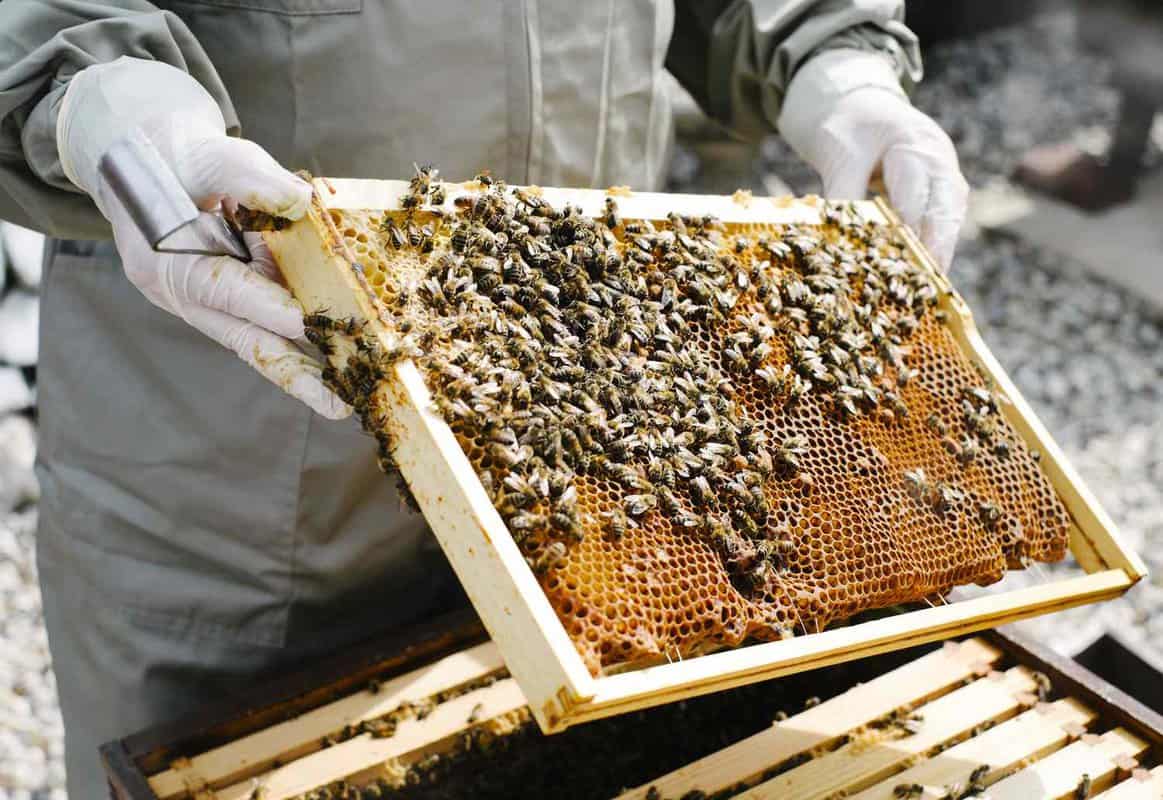For centuries, beekeepers have been fascinated by the mysterious lives of bees in the hive. By systematically observing and recording the activities of bees inside their hives, beekeepers have unlocked the secrets of the bee’s world. From their intricate communication systems to their complex social structures and fascinating reproductive processes, beekeepers have revealed a great deal about the behaviors and habits of bees in their natural environment.
What is a Hive?
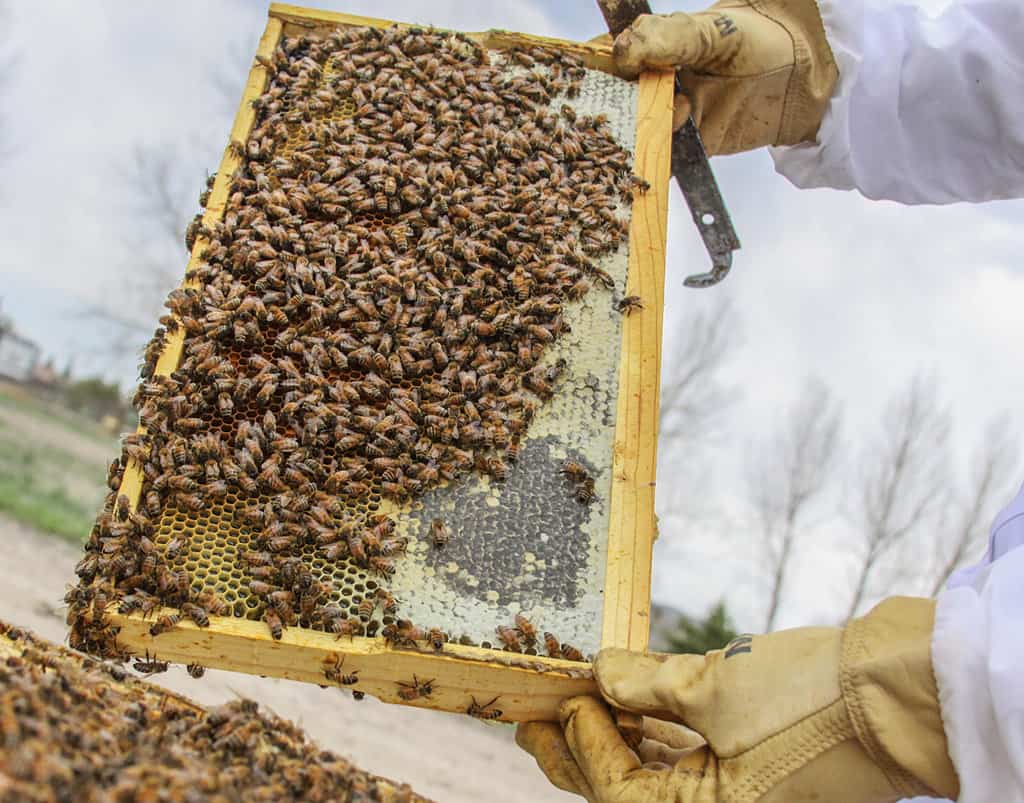
A hive is an enclosed structure built specifically for a colony of bees to live and work in. Inside the hive, bees build a series of hexagonal wax cells which they use to store honey and larvae. The bees have a complex social structure, with a queen bee in charge of the colony. The queen bee lays eggs and produces pheromones to keep the hive running smoothly. The other bees in the hive have specific roles such as foraging for food, defending the hive, and tending to the queen and her offspring. The hive is also home to a variety of other insects such as beetles, wasps, and ants, which help to keep the hive healthy and thriving.
What is a Colony of Bees?
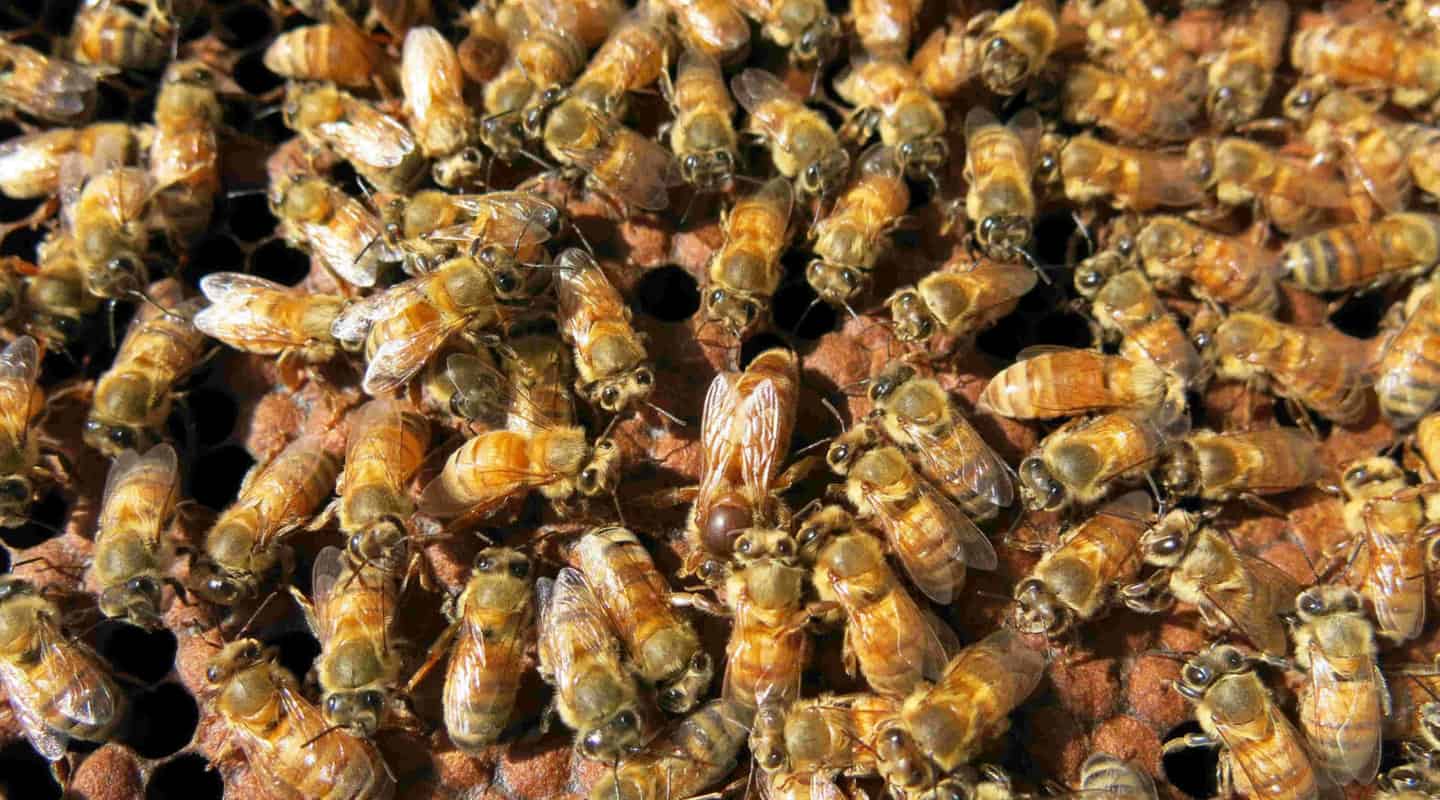
A colony of bees is a large family of bees living together in a hive. A single hive can house anywhere from 10,000 to 60,000 bees, depending on the species and the time of year. The colony is led by a queen bee, who is the only female bee that is capable of reproducing. The other bees in the hive are worker bees, who are responsible for taking care of the hive and collecting food.
Worker Bees: Worker bees work together to maintain the hive and care for the queen. This includes building wax comb, storing food, cleaning the hive, and defending the hive from predators.
Queen Bee: The queen bee is the most important bee in the hive. Her sole purpose is to lay eggs to ensure the hive is healthy and growing. The queen is constantly surrounded by worker bees, and her diet consists of a special substance called royal jelly.
Drone Bees: Drone bees are male bees who do not work in the hive. Their primary purpose is to mate with the queen. When the weather is warm enough, the drones will fly out of the hive and search for other queens to mate with.
Honey: Bees make honey by collecting nectar from flowers and storing it in their honey stomachs. They will then take the nectar back to the hive and deposit it in the wax comb. The bees will then fan the nectar with their wings to evaporate the water from it. Once the water has evaporated, the nectar becomes honey and is stored in the wax comb cells.
The mysterious lives of bees in the hive are fascinating and complex. The colony of bees works together to ensure the health and safety of the hive and its inhabitants. It is important to remember that without bees, there would be no food production and no pollination of plants. Therefore, beekeepers must be diligent in their efforts to ensure that bee hives remain healthy and productive.
How Do Bees Live in a Hive?

Types of Bees in the Hive
The honey bee community consists of three types of bees. The queen bee is the only female bee in the hive and her main role is to lay eggs. The worker bees are the smallest and most numerous bees in the hive. They perform all the tasks necessary for the colony’s survival, such as collecting nectar and pollen, building and repairing the hive, and caring for the young. Finally, there are the drone bees, the males of the hive, whose main purpose is to mate with the queen.
Duties of Different Types of Bees
The queen bee is responsible for laying eggs and ensuring genetic diversity in the hive. The worker bees are responsible for gathering nectar and pollen, collecting water, and building and maintaining the hive. They also care for the queen and the young bees. The drone bees’ primary duty is to mate with the queen bee.
Communication in the Hive
Bees in a hive communicate with each other through a complex system of pheromones and body language. The worker bees use a special dance to communicate the location of a food source to the other bees in the hive. They also use pheromones to alert the other bees to danger or to signal when it is time for the queen to move to a new hive.
Division of Labor in the Hive
The bees in the hive have a complex division of labor. The queen bee is the focus of the hive, and the worker bees take care of all the tasks necessary for the survival of the colony. The drones are responsible for mating with the queen and ensuring genetic diversity in the hive.
Reproduction in the Hive
The queen bee is the only bee in the hive that is capable of reproduction. The drones mate with the queen and the queen then lays eggs that will become the next generation of bees in the hive. The queen bee is capable of laying thousands of eggs in her lifetime.
Beekeepers and the Hive
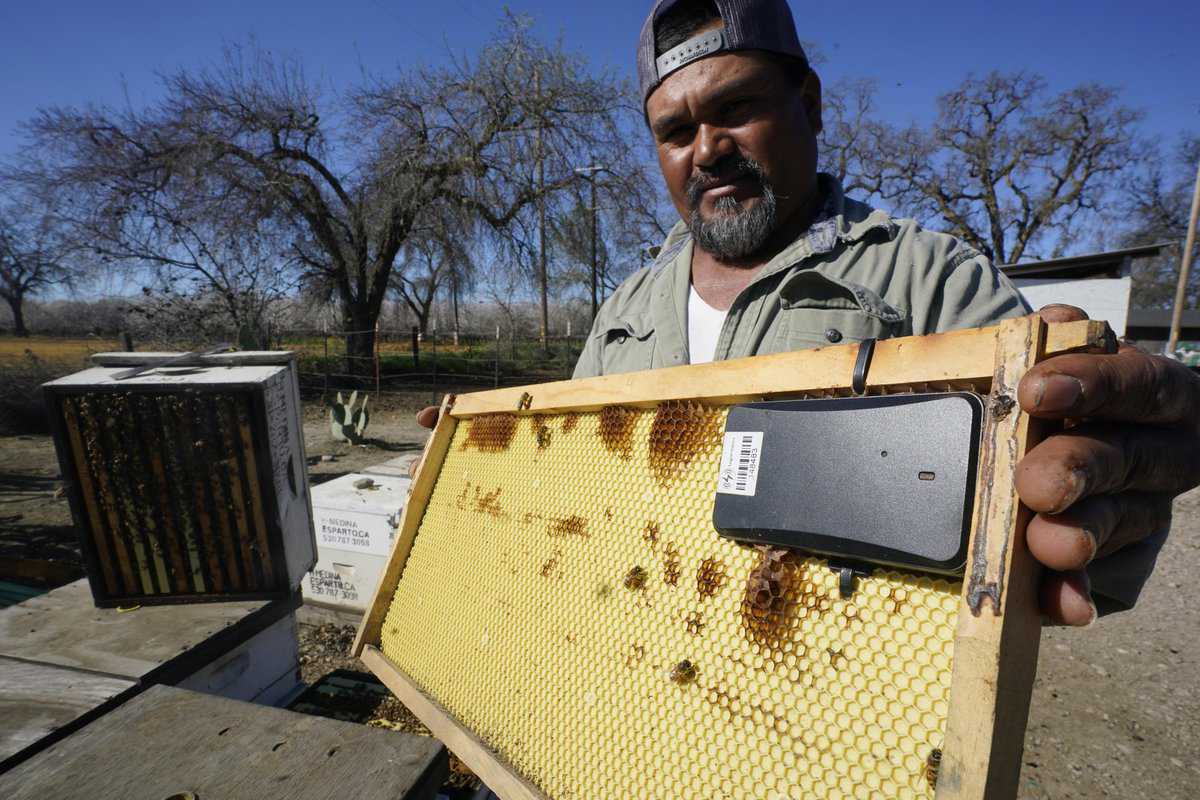
- Bees in the hive live in a highly structured society, where each bee has a specific role to play.
- The hive is run by the queen bee, who is the only female bee who is able to lay eggs.
- The worker bees are composed of all the other bees in the hive, and they are responsible for all the tasks needed to keep the hive running, such as foraging for food, building and repairing the hive, and caring for the young.
- Honeybees can produce up to 100 pounds of honey per year, depending on the size of the hive.
- Honeybees are responsible for pollinating many of the plants and crops that we rely on for food.
- Bees communicate with each other through a complex system of dances and pheromones.
- Beekeepers use a number of techniques to ensure the health and productivity of the hive, such as providing adequate nutrition, controlling pests, and monitoring the queen.
- Beekeepers must also protect the hive from predators, such as bears and skunks, which can cause significant damage to the hive.
What are the Benefits of Having a Beehive?
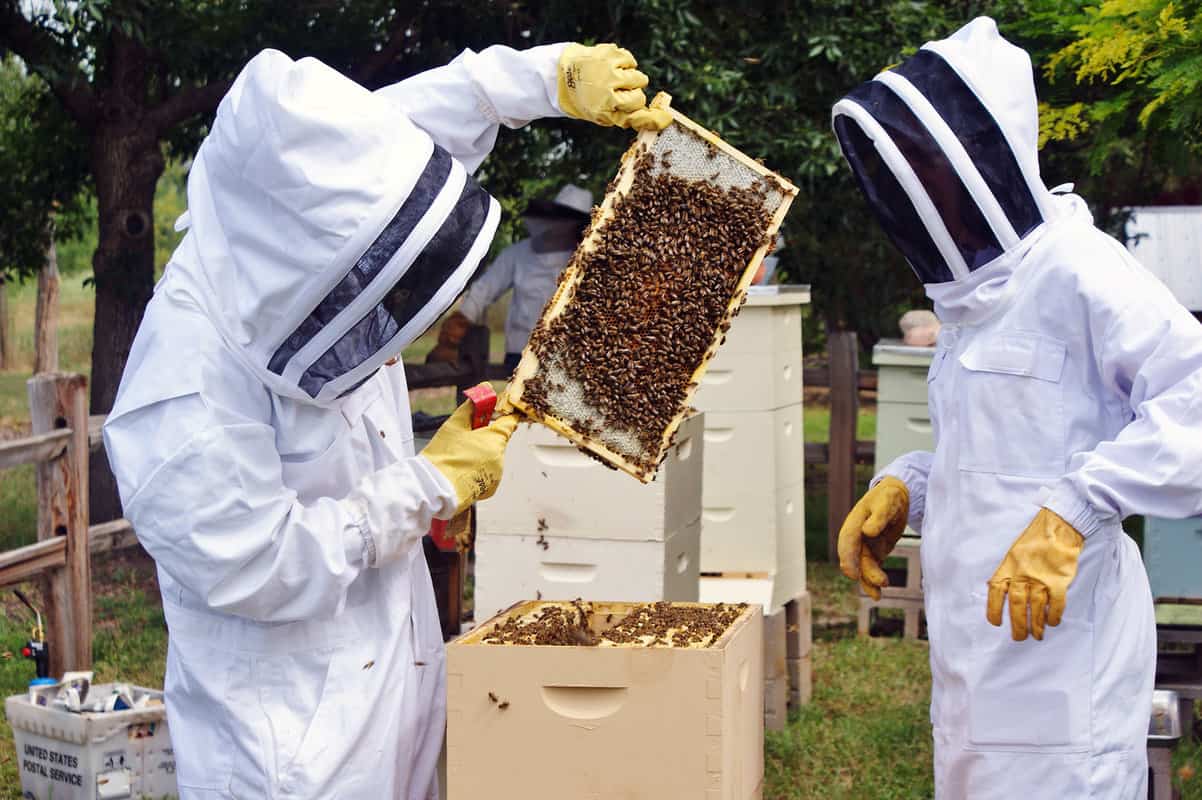
Bees in the Hive play an essential role in the environment, providing pollination to plants and flowers. Having a beehive provides a number of benefits to both the environment and beekeepers.
- It increases the number of bees in the environment, which in turn helps to pollinate plants and flowers.
- The honey produced from the hive can be sold or used as a natural sweetener.
- Beehives can be used to produce beeswax, which has a number of uses, from candles to cosmetics.
- The bees in the hive can be used to produce royal jelly, a nutritious substance used in health and beauty products.
- Having a beehive can help to promote biodiversity, as different species of bees can live in the same hive.
- Beekeepers can use the hive to study the behavior of bees and the effects of different environmental factors.
Beekeeping is a rewarding activity and having a beehive can help to contribute to the environment in a positive way.
Challenges of Keeping a Beehive
- Pest Infestation: Pests such as small hive beetles, wax moths, and varroa mites can infiltrate the hive and wreak havoc on the bee population. Beekeepers must monitor the hive for signs of infestation and treat it if needed.
- Protection from Natural Elements: Extreme weather changes can be detrimental to bee populations. Hives need to be protected from heavy rain, strong winds, and cold temperatures, and beekeepers must be vigilant about inspecting and maintaining their hives.
- Foraging: Bees need access to plenty of flowers, plants, and trees to forage for food and build up their hive. Beekeepers need to be sure that their bees have access to a wide variety of plants in order to thrive.
- Diseases and Parasites: The bee population is constantly threatened by diseases and parasites that can spread quickly throughout the hive. Beekeepers must stay up to date on the latest treatments and methods of preventing and treating these diseases.
- Honey Production: Honey production requires careful management and monitoring of the hive in order to ensure that the bees have enough resources to produce enough honey. Beekeepers must also take into account the local climate and season in order to adjust their honey production plans.
Frequently Asked Questions
How Many Bees are There in a Single Hive?
On average, a healthy hive contains between 20,000 to 60,000 honeybees. The exact number depends on the size of the hive and the time of year. The population of a hive is usually at its peak during the summer months when bees are busy foraging for nectar and pollen. In the winter, the number of bees in the hive can drop to as few as 10,000.
What Type of Environment Do Bees Need to Thrive?
- Adequate Food Supply – Bees require a steady supply of nectar and pollen to survive. They rely on flowers and other sources of food to remain healthy and productive.
- Protection from Predators – Bees are vulnerable to predators like birds, spiders, and wasps. They need a secure hive to protect them from these threats.
- Regulated Temperature – Bees need a stable temperature that ranges between 95 and 115 degrees Fahrenheit for optimal growth and development.
- Plenty of Sunlight – Bees need sunlight to power their flight muscles and to regulate their body temperature. Insufficient sunlight can hinder their ability to forage for food.
- Clean Air – Bees require clean air to stay healthy and produce honey. Pollution, smoke, and other airborne toxins can be harmful to them.
What kind of materials are used to make bee hives?
Beekeepers use a variety of materials to construct bee hives, including wood, plastic, and metal.
- Wood is the most common material used to make bee hives, as it provides insulation and protection from the elements. Additionally, wood is easy to work with and inexpensive.
- Plastic is also a popular choice for bee hives, as it is lightweight, durable, and easy to clean. Plastic hives are also resistant to mold and rot.
- Metal is used for some commercial bee hives, as it is more durable than wood and plastic. Metal hives are also less prone to warping and cracking.
Beekeepers must ensure that the material used to construct the hive is properly treated to prevent pests and diseases from entering the hive. Additionally, they must also make sure that the material is safe and non-toxic for the bees.
How Often Do Beekeepers Need to Check the Hive?
Beekeepers should inspect their hives at least once a month, preferably more often. During the spring and summer months when the colony is growing, more frequent inspections are recommended. Beekeepers should check for signs of pests and diseases, monitor the health of the queen, and inspect the honey stores. They should also check for any signs of swarming and intervene if needed. Additionally, beekeepers should routinely check their hives for signs of honeybee death and remove excess comb and debris.
How Can Beekeepers Protect the Hive from Predators?
- Install hive boxes in strategic locations: Beekeepers should place the hive boxes in open areas, sheltered from the wind, and away from predators. They should also install the boxes at a height where the bees can defend the hive against predators.
- Use protective gear: Beekeepers should wear protective gear, such as a face veil and gloves, when tending to the hive. This helps to protect them from getting stung while they are trying to protect the hive.
- Check for signs of predators: Beekeepers should periodically check the hive for signs of predators, such as evidence of chewing or digging, or for dead bees. If they find any signs of predators, they should take immediate action to protect the hive.
- Install electric fences: Beekeepers can install electric fences around the hive to keep predators away. This can be an effective way to keep larger predators, such as bears and raccoons, away from the hive.
- Install perches: Beekeepers should install perches around the hive to provide shelter for the bees. This will help to keep predators away and provide a safe place for the bees to rest.
- Use traps: Beekeepers can use traps to capture and remove predators from the area. This is an effective way to keep predators away from the hive.
Conclusion
Beekeeping is a fascinating pursuit that helps us to increase our understanding of the mysterious lives of bees in the hive. It is an activity that requires skill and knowledge, but can also bring great joy and satisfaction to the beekeeper. Through careful observation and thoughtful management, beekeepers can ensure the health and vitality of their hives, while providing an invaluable service to the environment.
